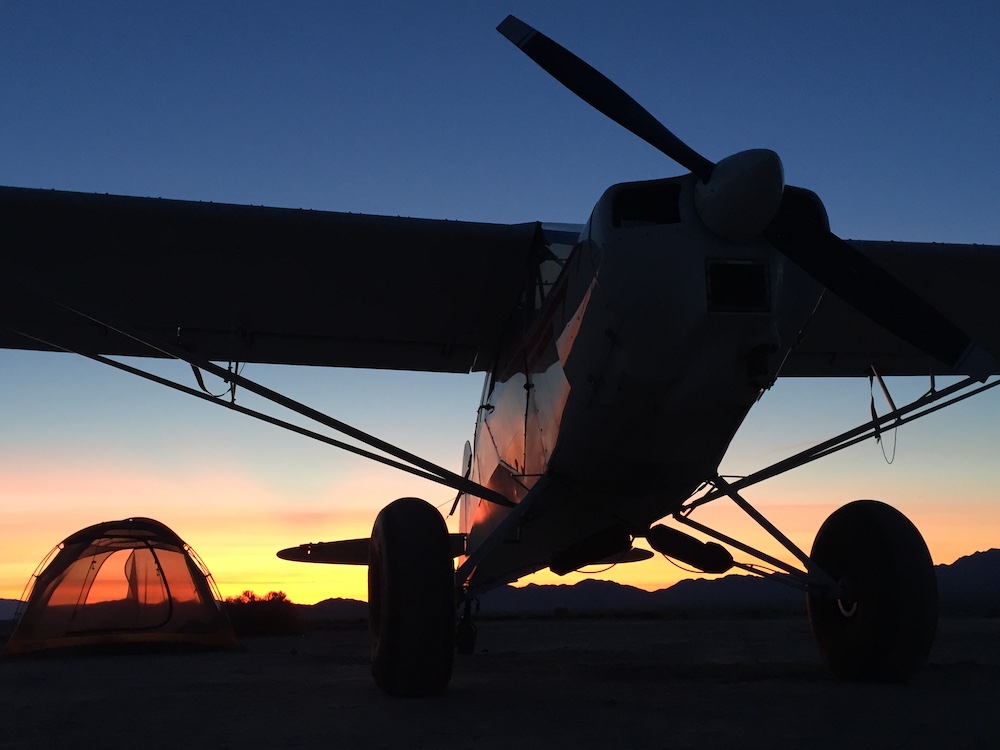UTAH BACKCOUNTRY STRIPS CALL TO ACTION – DEADLINE IS SEPT. 27

The BLM has begun the Public Scoping process to prepare an Environmental Impact Statement (EIS) and Resource Management Plan (RMP) for Utah’s Grand Staircase – Escalante National Monument (GSENM). The BLM scoping process is to gather topics that the public thinks should be considered in the EIS and RMP. Your help is needed to encourage the BLM to include aviation and retention of the nine Utah backcountry airstrips in the EIS/RMP study area.
The deadline to submit public comments is SEPTEMBER 27, 2022.
Please submit your public comments using this link: https://eplanning.blm.gov/eplanning-ui/project/2020343/570/8003077/comment
For more information on the project, visit this link: https://eplanning.blm.gov/eplanning-ui/project/2020343/510
Here are talking points for reference. Please submit your own individualized comments in your own words based on the below:
- Aviation should be included in the RMP as an allowable use.
- Most Utah backcountry airstrips have been in existence since the 1950s, predating the 1964 Wilderness Act. Access and use of these airstrips should be retained.
- Aviation has a very small environmental footprint, the lightest footprint form of access to these lands. Airstrips do not have driving wheels and once landed, do not go “off trail.” Noise from aircraft is transient and of short duration.
- Airstrips are situated on natural flat land features, such as level, open meadows with little occurrence of soil disturbance or erosion.
- Airstrips provide vital access to aid Search and Rescue, emergency response, and firefighting.
- Airstrips offer possible life-saving options when small aircraft encounter mechanical problems or deteriorating weather conditions while flying over the relatively hostile terrain in southern Utah.
- Airstrips are an excellent resource to the administrative needs for supervising the lands.
- Airstrips transcend the need for roads and offer widely dispersed recreation activities.
- Peer-reviewed research substantiates that small aircraft noise has no detrimental impact on wildlife.
- Backcountry airstrips offer recreational access to the disabled and those with limited mobility and without the need for strenuous physical activity to enjoy our public lands.
- Airstrips are trailheads: aviators are non-motorized recreationists, participating in hiking, camping and other low-impact activities.
- Backcountry aviation offers a positive economic impact, with aviation fuel sales, food and lodging, sale of provisions and supplies, and other tourist-related support for the surrounding communities.
- The Recreational Aviation Foundation and the Utah Backcountry Pilots have successfully renewed MOUs in place with the BLM to provide cooperative maintenance of backcountry airstrips.
Your public comments count.
Thank you for helping preserve these unique and priceless backcountry aviation assets.
Here are the nine airstrips affected:
Boulder – 37.88548 N / 111.46342 W
Bowington – 37.77606 N / 111.39434 W
Cedar Wash – 37.66053 N / 111.54239 W
Collet Top – 37.45633 N / 111.467 W
Colt Mesa – 37.74 N / 111.08834 W
Escalante Canyon – 37.5323 N / 111.7063 W
Grand Bench – 37.27334 N / 111.195 W
Pilot Knoll – 37.24317 N / 111.491 W
Squaw Bench – 37.36817 N / 111.66333 W

I understand the BLM is considering closure of nine backcountry airstrips in Utah. Not only would this have a negative economic impact on the surrounding communities, it would restrict search and rescue efforts as well as landing areas for distressed aircraft.
There can be no benefit from these closures
These nine airstrips cause no detriment to the land and surrounding countryside. They are modest with no lights, no blacktop, and not a lot of care.
Those pilots landing on the strips are then on foot. No motorized 4-wheelers, no ground destruction…..just hiking and camping. It does not disturb nature or wildlife. These little planes that fly backcountry airstrips have a very small footprint and low disturbance to our natural surroundings.
Pilots are all very conscience of where they are and how to take care of the surroundings. These strips also really provide a place to land in case of engine failure or perhaps bad pilot health.
I see no reason to close these strips!
I would like to see aviation continue its long time successful role in the GSENM area. These airstrips began as natural ideal long flat areas and were developed because they were easier, less expensive and less destructive than building roads to these locations. Even if roads are now available, some routes take hours to traverse instead of minutes by small aircraft further increasing safety and accessibility in these areas. Often times, disabled people are not able to travel a long rough trail for hours on end. However, they are able to more easily take scenic flights that perhaps include a stop and such airfields. In addition, scenic flights such as these have an increase in safety with emergency landing sights available such as these airfields. When small aircraft land after touching the ground for an estimated 1000 feet, the pilots and passengers in remote areas are then changed to foot traffic as opposed to additional motorized vehicles such as atvs, motor boats or jeeps.
Our family enjoys airplane camping. It is a reason we visit the American west. Airplane camping allows us to disperse further than large tourist parts such as crowded overly impacted reservoirs. We love stopping at small towns with small airports and grabbing something to eat, fueling up the plane and grabbing a shower at a local motel. Although our individual economic footprint is small, as a small business owner, I can attest for the value of each small customer and appreciate each and everyone that caters to our small community.